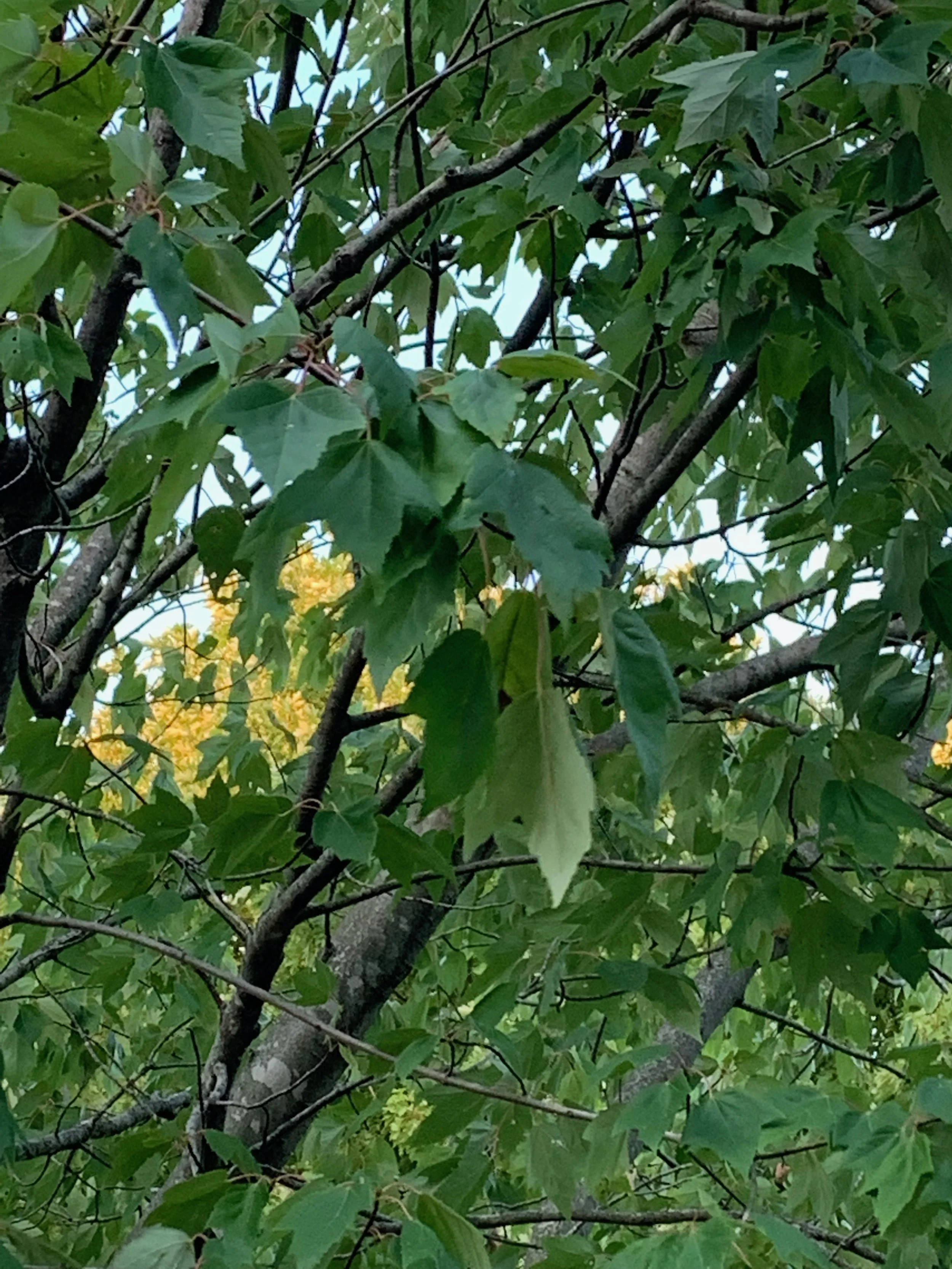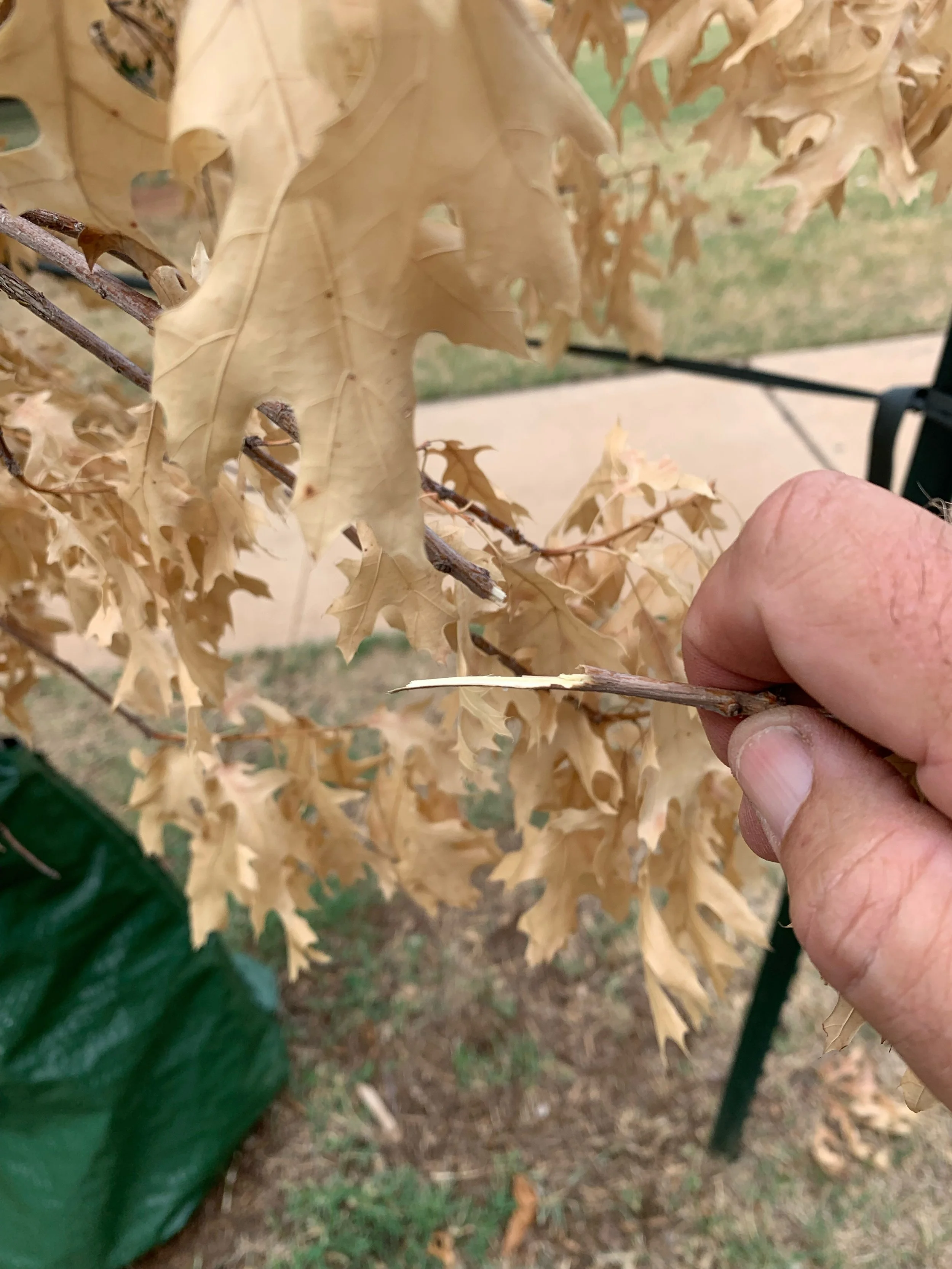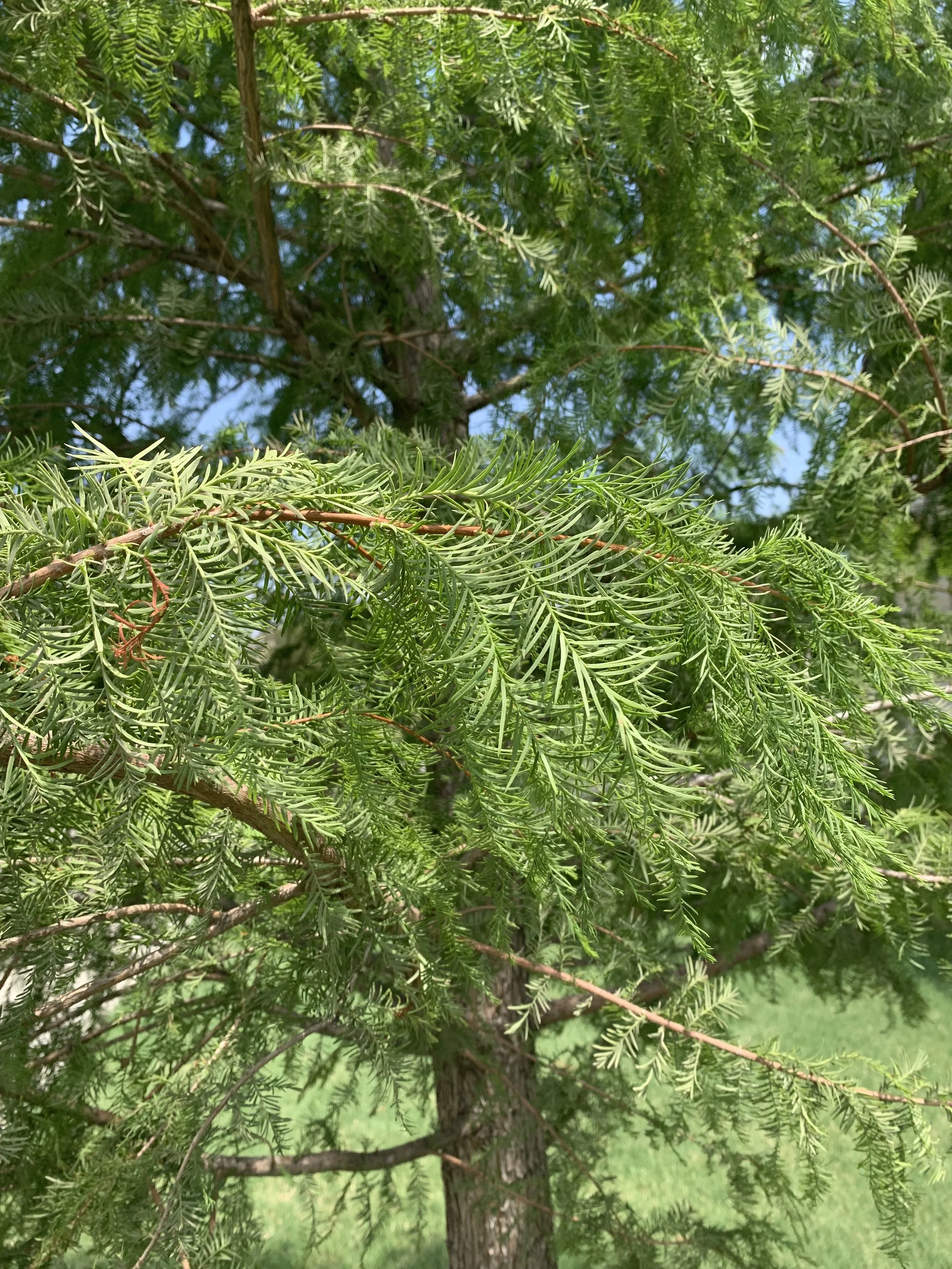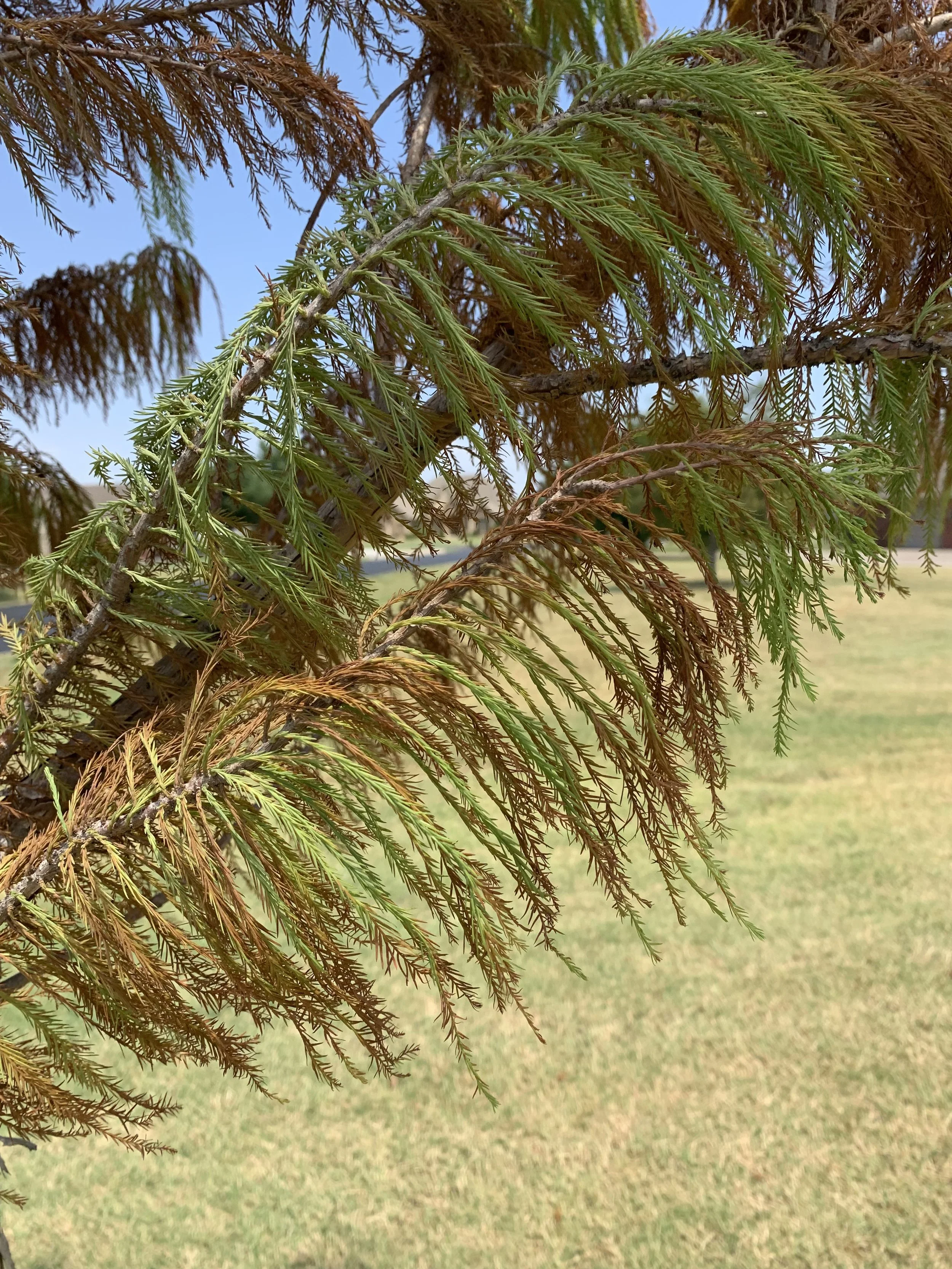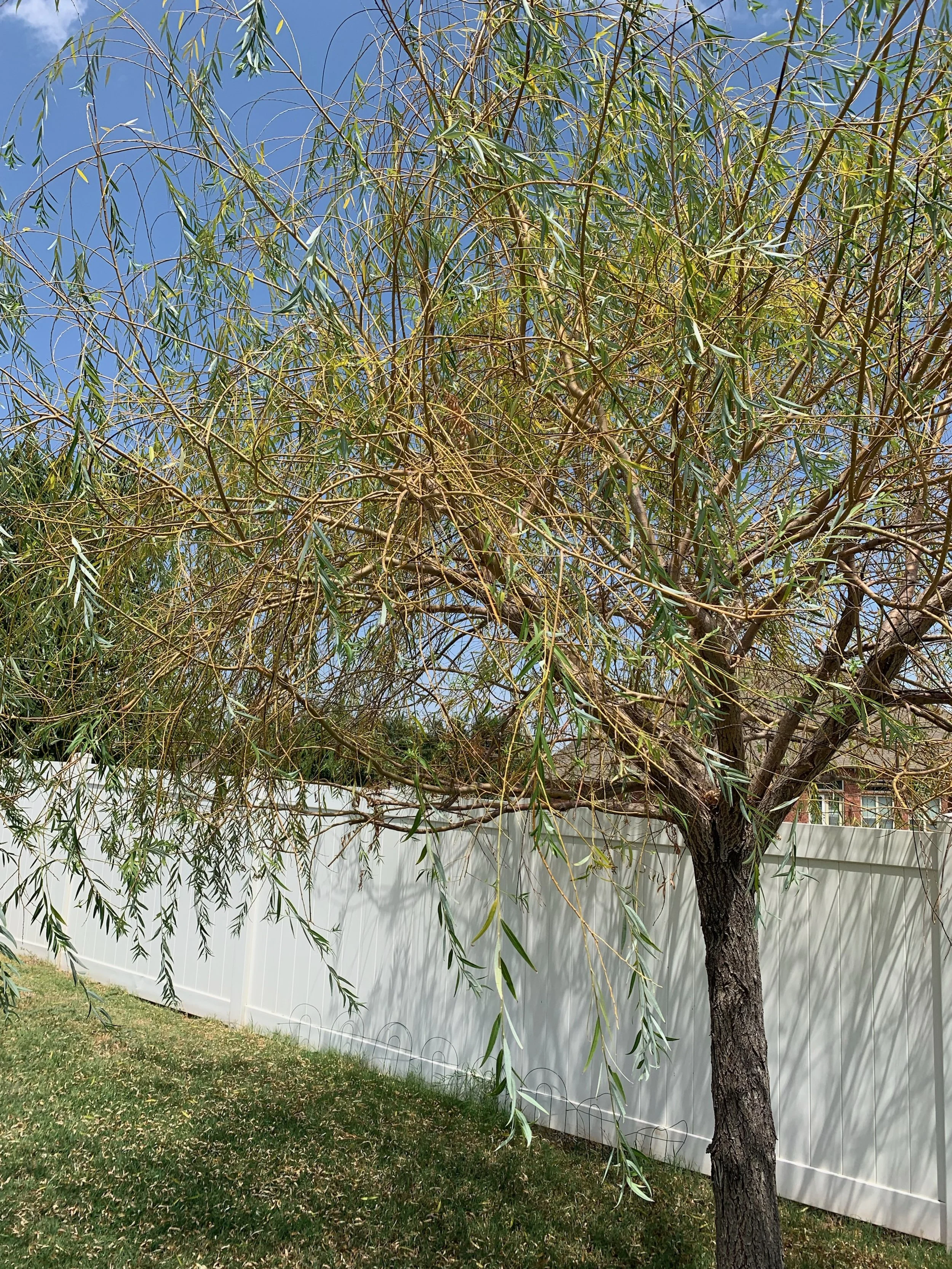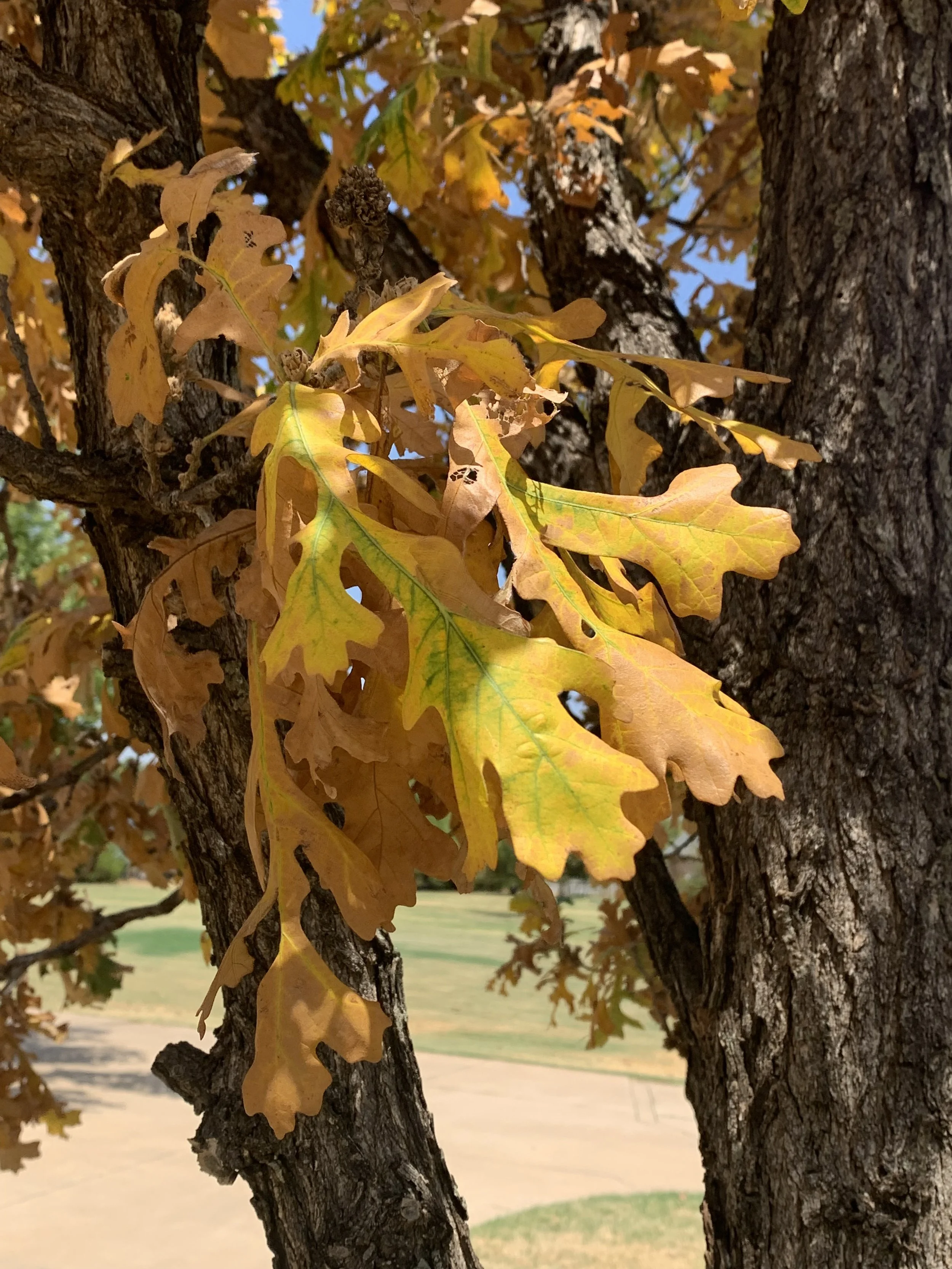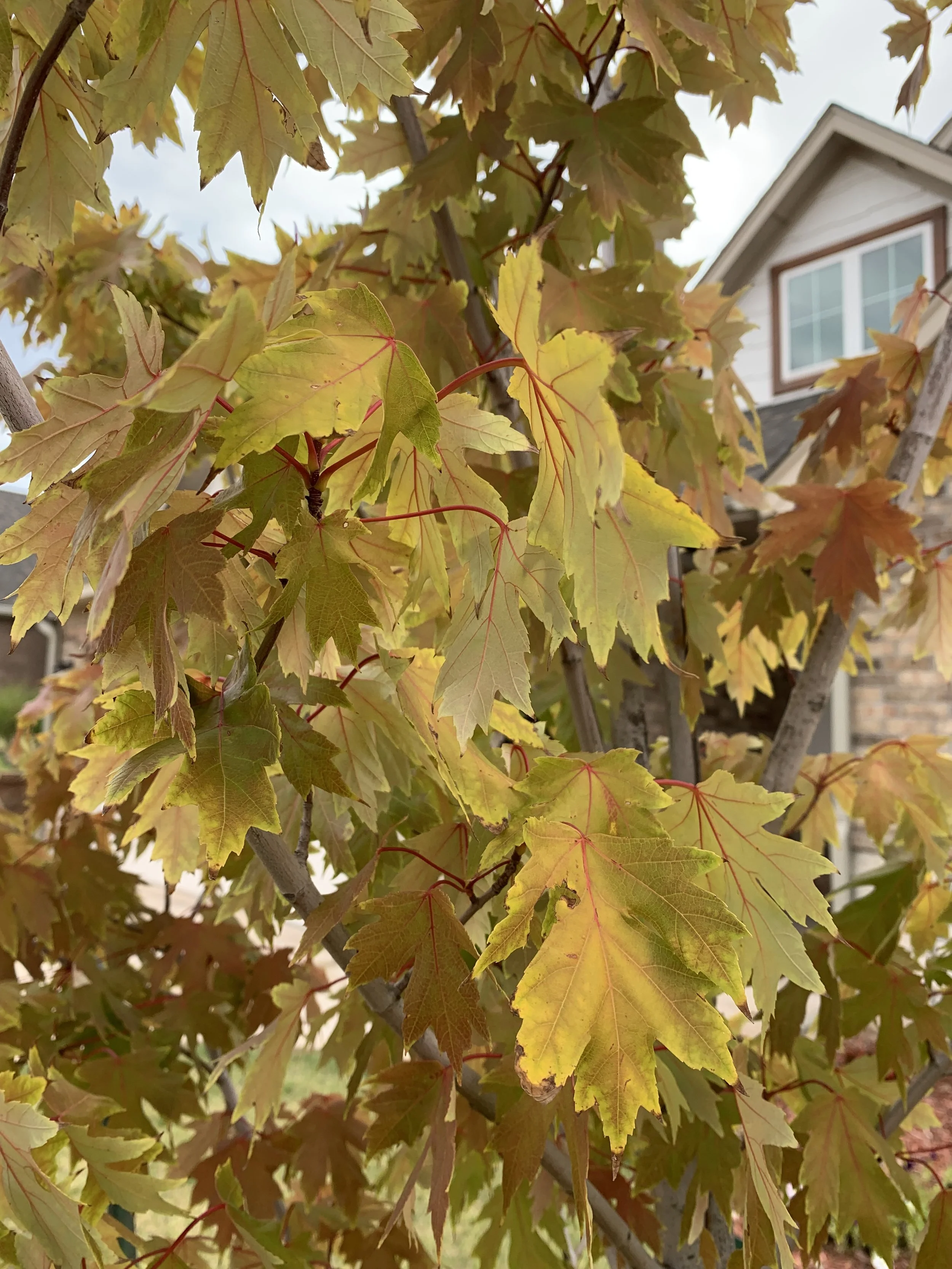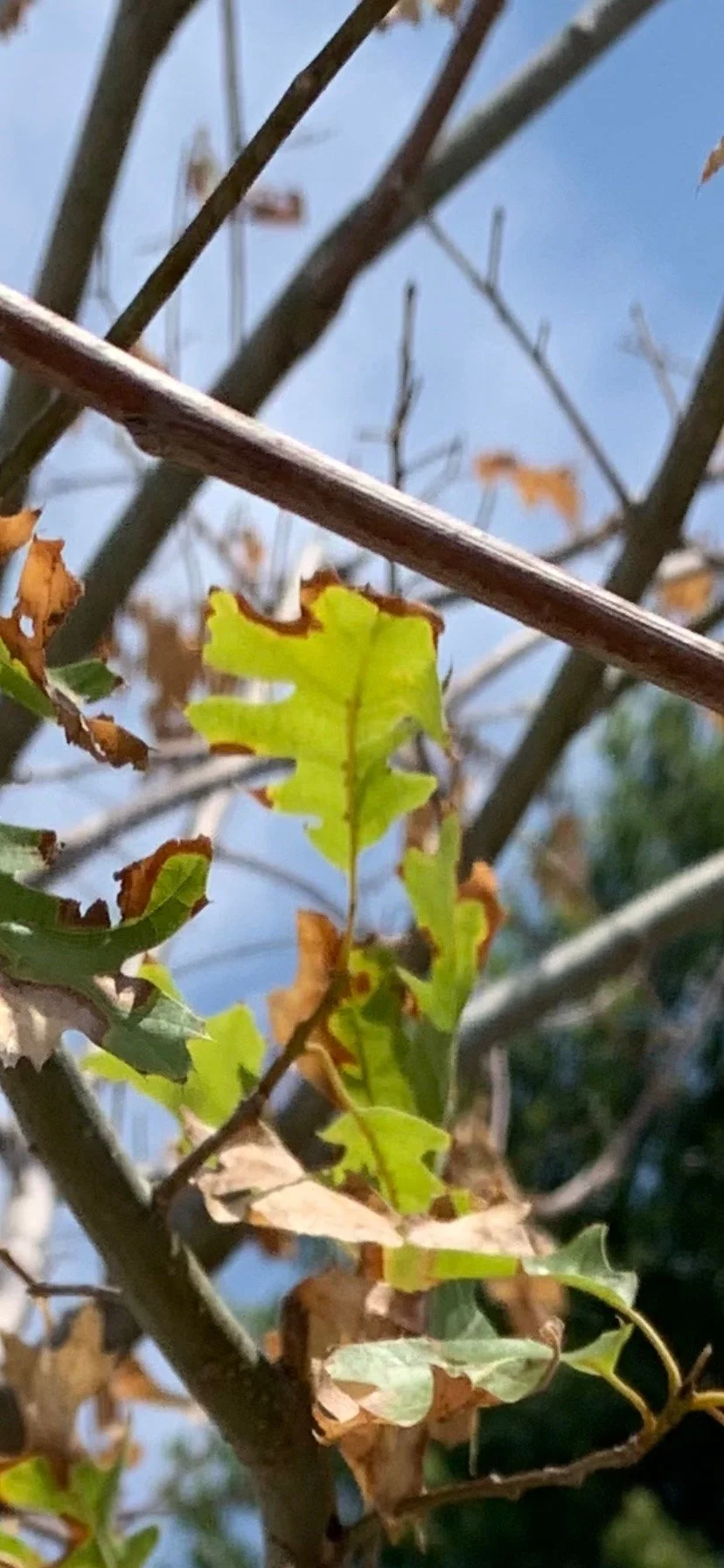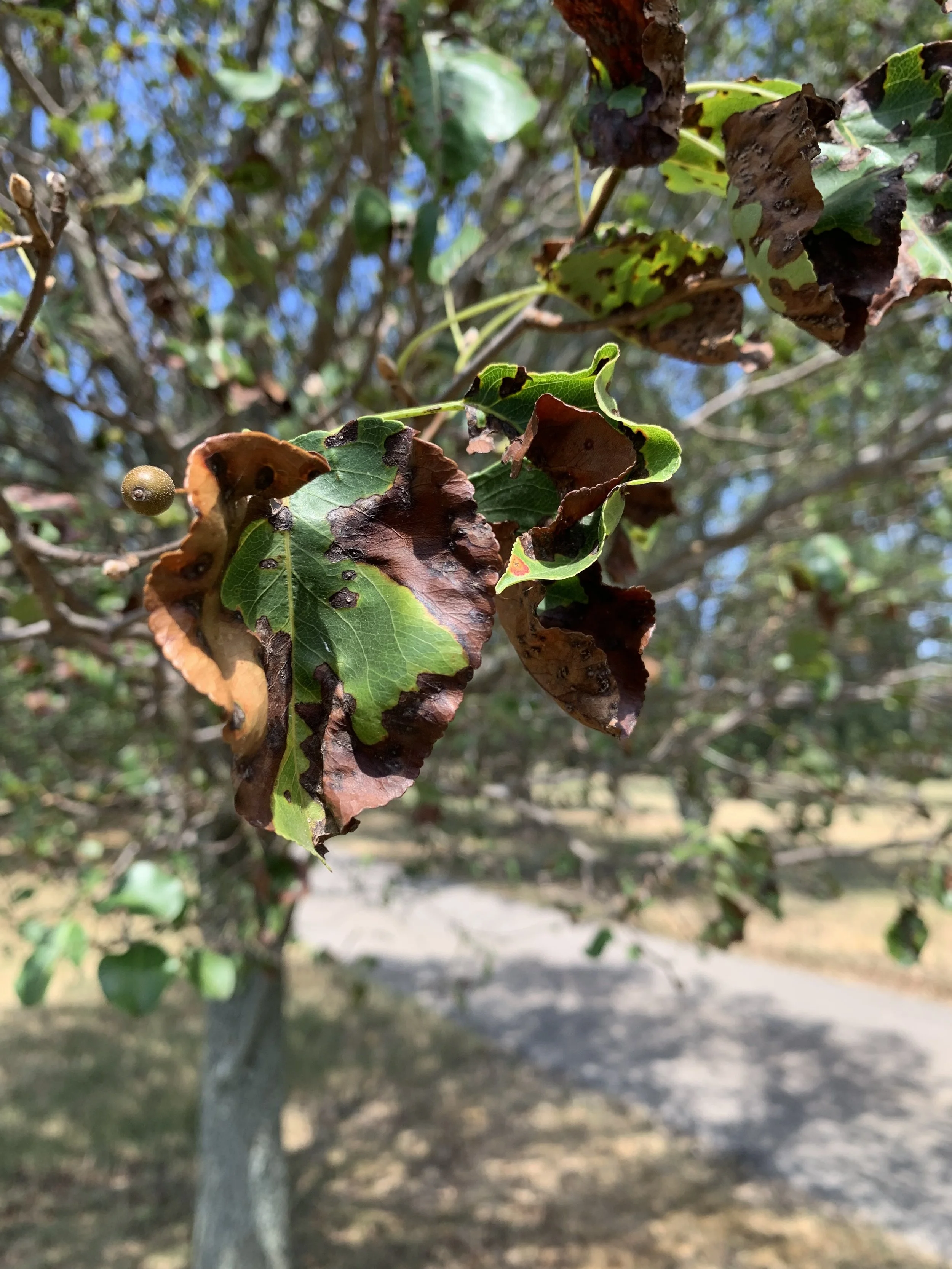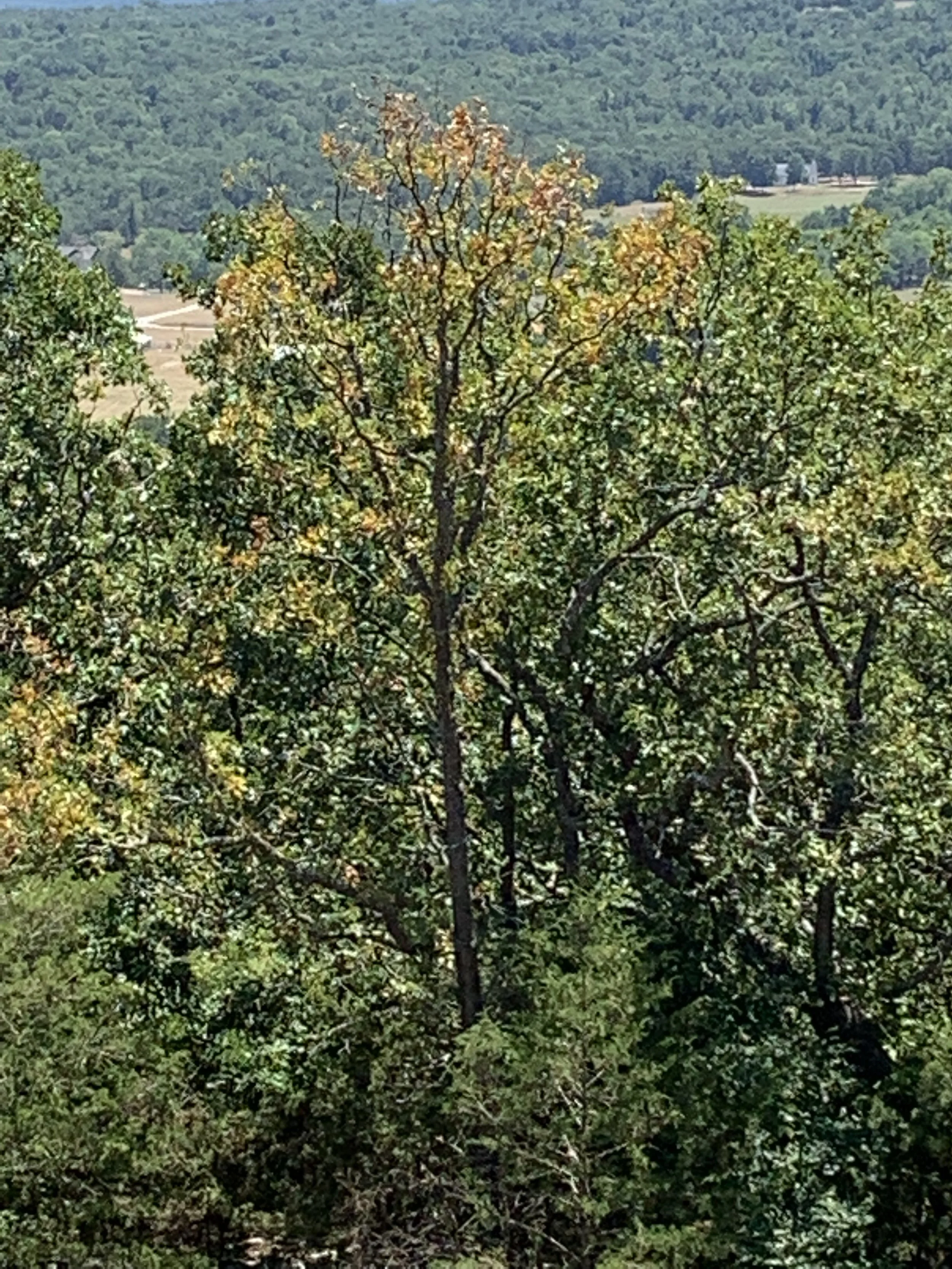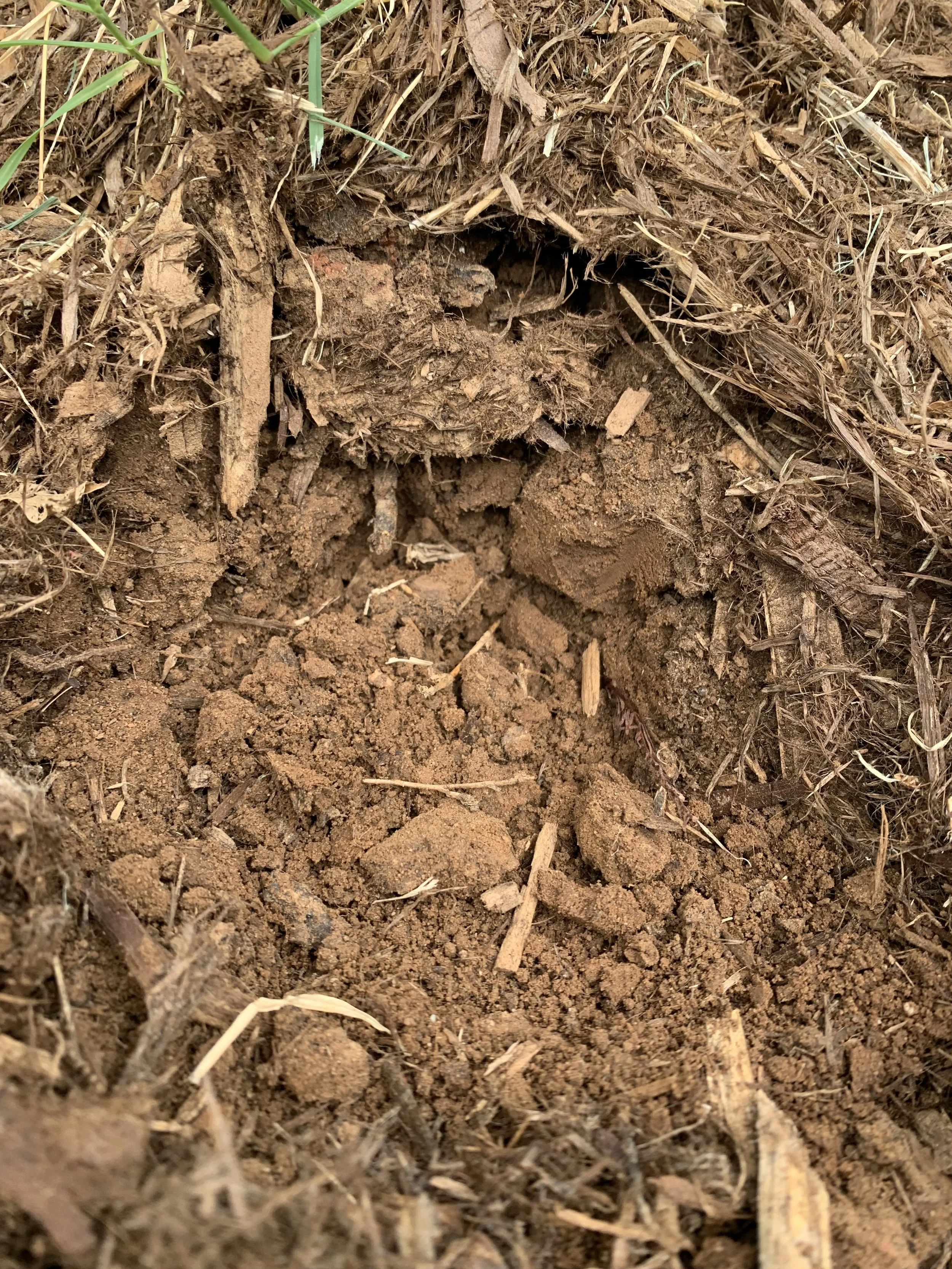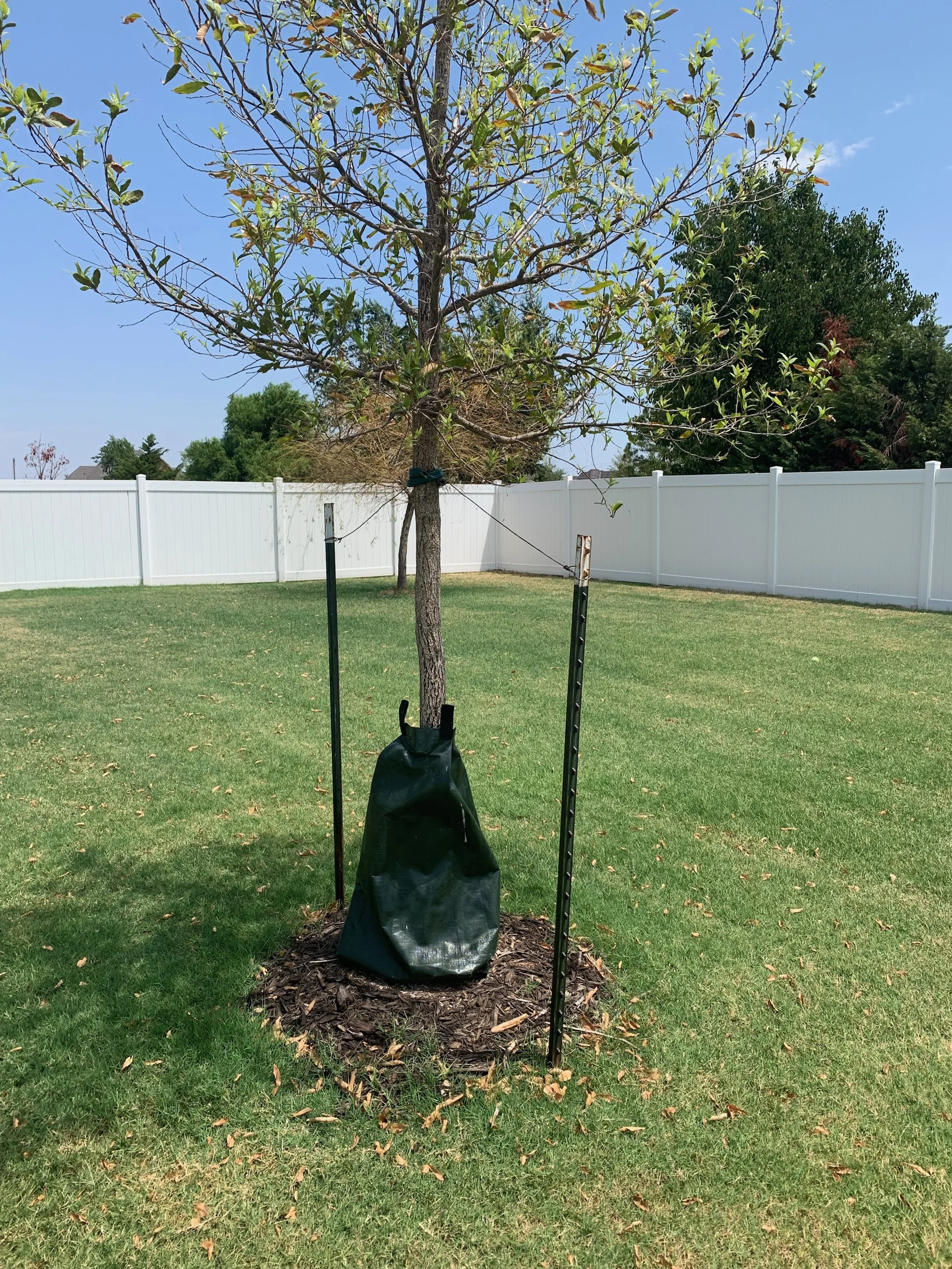Drought Stress on Trees
It has been 6 weeks since most of the Oklahoma City metro area has received a ¼” rainfall.
If the lack of rainfall wasn’t enough stress for your landscape, the number of 100+ degree days is now into double digits.
Lawns and landscapes are looking tired and tattered.
Lawns are struggling. Shrubs are struggling. Trees are struggling.
A lot of attention has been given to keeping lawns green, but what about your trees?
Your trees represent an enormous value to your landscapes.
Mature trees increase property values on average by 7%.
Trees are a critical component in our efforts in creating a healthy environment.
Trees reduce energy consumption.
Trees make the places we live, work, and play more attractive and enjoyable.
Afternoon wilting and drooping leaves is the first signs of drought stress.
Every effort to reduce stress and protect a tree is worth it.
Stress? What is stress for a tree? Stress is anything that keeps a tree from growing.
Your trees are feeling the stress of the drought and heat of 2022!
Drought stress on trees typically follows these steps:
Temporary Wilting – Wilting and drooping leaves in the afternoon on a 95+ degree day isn’t a problem as long as the following morning the leaves have returned to normal.
Permanent Wilting – Wilting and drooping leaves in the morning and all day long.
Yellowish and/or Fall Color Leaves – Fall color is not a good thing in July!
Leaf Scorch – Leaf margins have a brown or burned appearance.
Defoliation – Leaves begin dropping from the top of the tree and the ends of branches.
Long-term drought results in dead branches, thin canopies, unusually small new leaves, increased pest problems, and trees that are slow to close wounds.
Supplemental watering during periods of drought and heat is very important
Often when leaves turn brown during a drought and the leaves remain on the tree it is a sign the tree does not have enough moisture to put on new buds. In this case the ends of the branches are brittle and the chances of recovery are slim.
An early indication of drought stress is drooping or wilting leaves in the afternoon, such as the needles on this bald cypress are doing. If the next morning the needles look normal, no extra watering is needed.
Permanent wilting is underway on this bald cypress. Supplemental watering is needed to reverse drought stress.
Willow trees love moisture. It is not uncommon for willows to be one of the first trees to show drought stress by dropping excess leaves. Some leaf drop is good during a drought and part of a trees defense system to survive.
Depending upon the species, a full-grown tree can use up to 250 to 500 gallons of water per week when temperatures are high.
A 10-year-old tree in your landscape is looking for 50 gallons of water every day.
A tree’s need for water is high on hot days because 90% of the water a tree takes in is being lost through transpiration.
What is transpiration? Water is absorbed by the roots, and moves up the trunk to the branches out to the leaves where the water is released as water vapor. Transpiration is not all bad. The water vapor cools the leaves 10-15 degrees as it is released.
Do not assume if your grass is green that the trees in your lawn are receiving enough water. Trees and grass are competing for the same water. Deep soaking is required to get enough water for both the turf and tree roots.
Yellowing or fall-colored leaves during the growing season is a sign that drought stress is advancing. Deep soaking of the entire area under the canopy of the tree every other day should be started immediately.
When the edges of the leaves are brown or have a burned appearance the tree will soon begin to defoliate.
Browning or burnt edges are a signal you need to start deep soaking the area under the trees canopy now.
As long as the buds located at the end of the branch remain soft and supple, the tree will put on new leaves as soon as it receives sufficient moisture.
It is common for mature trees suffering drought stress to start yellowing in the top of the tree first.
Mature Tree Survival
Most healthy, mature trees (trees with at least a 6” wide trunk and have been planted for at least 2 years) can sustain a drought without supplementary water because of their large root system. Trees that are weak because of previous stress will be the first trees to show signs of drought stress.
How do you know if your mature trees need supplementary watering during a drought?
Water if there are visible signs of drought stress.
Water if the area under the tree canopy is dry. A good way to test dryness is to take a large 6-8” screwdriver and press it into the soil in a few locations under the canopy of the tree. If the screwdriver doesn’t easily slip into the soil, it is time to start watering.
Even during a drought soil around a tree should be moist enough you can easily slip a 6-8” screwdriver into the soil.
A 20 gallon Treegator bag is a good tool for deep soaking any tree planted in the last two years. The bag will slowly release water for two days. Refill the bag every 3-4 days during hot weather.
Watering mature trees:
Water the entire area under the canopy of the tree.
Water deeply every 3-5 days in 95+ degree weather.
Allow 1-2 days between deep soakings for the area to dry. Roots need air as much as they need water. When the soil is saturated all the air is replaced with water and root damage will occur.
Daily shallow watering is not helpful. The most active tree roots are in the top 12” of the soil. The goal is to get water 12” deep.
Place small containers around the area to measure the amount of water. Water long enough to get at least 1-2” of water on the area per week.
Young Tree Survival
Trees with trunks that are smaller than 6” in width or have been planted in the last two years are showing signs of drought stress if they have not received supplementary water the past few weeks.
Watering young trees:
In excessive heat and drought trees that have been planted in the last 30 days, need to receive at least 10 gallons every other day. Even if you have an irrigation system, additional watering is required during the heat of the summer.
Trees planted anytime in the last two years need at least 10 gallons of water every 2-3 days during our current weather pattern.
Treegator bags are a good tool for watering new trees. The original Treegator holds 20 gallons of water that slowly drips out over two days.
During the first two years of a tree’s life, maintain a grass-free 2-3” thick mulched area around the tree.
Two weeks ago this one year old tree began defoliation. The owner placed a Treegator bag around the trunk of the tree allowing water to slowly drip over the top of the root ball. The tree rebudded and now is producing leaves.
Most tree varieties, if healthy, can drop all their leaves during a drought and rebud once rain returns.
Once rain moisture returns energy stored in the roots is used to produce new leaves. As the tree gains leaves, the photosynthesis process starts again rebuilding energy in the root system.
A tree has a good chance of survival if enough energy can be stored in the root system before the tree endures more stress. An extreme winter, insect, or disease stress before the tree has a chance to replenish energy could be detrimental to the tree.
Drought alone may not kill your trees, but it may be the final blow to a tree that is already under stress. Most trees die from a combination of stressors, such as drought followed by pest or disease issues, or drought followed by winter injury.
Finally, increase inspection of trees the rest of the season, through the fall and next spring. Drought-stressed trees are prone to insect damage.
Remember, your trees and your lawn are competing for the same moisture. And right now, there may not be enough for both. Each week the drought continues, the need to supplement water your trees increases.
Protect your investment in your trees.
Protect the value of trees in our environment.
Do all you can to reduce the stress on your trees by inspecting for drought stress and supplementing water as needed.
Lorne Hall
Hall | Stewart Lawn + Landscape
(405)367-3873


